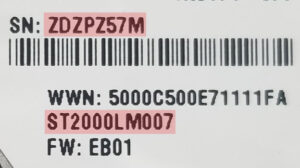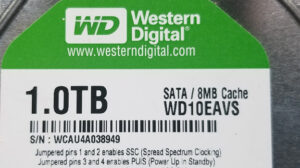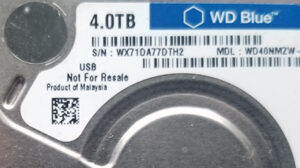
When estimating a turnaround time for data recovery, two main factors determine the timeline. They are best described as follows:
“I need it NOW!!! Yesterday, if possible” or “Take whatever time you need, I just need the data recovered.”
Although the latter is preferred, and usually works best for all involved, the former is more common. It is the default for companies that rely on the data that needs to be recovered and that is understandable. But what are the realistic expectations if you have submitted a hard drive or any other media for recovery? In other words, the key question on everybody’s mind should be, “How long will it take?”
Well, let’s take a closer look at the length of time required for data recovery.
First off, it is important to come to grips with the fact that there is no solid answer to that question. That is because several considerations impact recovery time in different ways. I know that sounds like an excuse but the reality is that many things come into play when recovering data from any form of devices.
Here’s a closer look at what they are.
Manufacturer
I am going to generalize here, but that will help me make my point. Seagate products tend to take longer to recover data from than Western Digital or Toshiba. This is all related to mechanical issues. The upside is that there are exceptions.
Model and Serial Number
Some models are extremely difficult to work with while others are not. The “nightmares” are the Rosewood series of hard drives from Seagate and the Splyglass-encrypted WD series drives. These are the hard drives you usually find online and are typically sold in extreme volumes. If you are purchasing a slim Seagate backup drive or a portable WD hard drive on Amazon, chances are extremely high that it will be either a Rosewood or Spyglass.

There have been times when it took over 15 months to recover a single Rosewood drive and almost 12 months for a WD Spyglass. As for serial numbers, some are so rare, that it is impossible to find a good donor match. Sometimes it takes weeks to months just to get a suitable donor into our lab.
Capacity
The era of 40GB and 200GB drives is far gone. The average capacity of a drive in a household is now a whopping 4TB and higher. Naturally, this will make recovery take longer. A lot longer. To give you an idea, just copying 4TB from one drive to another can take up to 3 full days. This is if the copying is being done at regular USB2 speeds. I’m also talking about copying from one healthy drive to another healthy drive. As you can imagine, when someone with a 6 or 8TB drive expects same-day recovery, it’s going to make us scratch our heads.
Failure Type
Although it is possible to recover a drive within 2 days from a logical failure where only minor corruption of the file system exists, some other failures are very complex and the level of complexity adds to the data recovery timeline. One such example is severe platter damage.
So, in simple terms, data recovery turnaround times depend on the four factors noted above. However, each of them has additional “sub-factors” that also impact how long it will take to get your data recovered. For a better understanding of this, let’s take a closer look at two different possible scenarios.
Scenario 1
A client submits a 1TB WD Internal Green Series 3.5 drive. The client says he accidentally formatted the drive while installing a fresh Windows operating system. The client indicates that the files are important but can wait if that reduces the cost of recovery.

Scenario 2
A client submits a 4TB WD portable drive. The client says the drive was dropped from a desk getting knocked over by a running dog. The drive was spinning at the time as it was connected to a laptop. The client says the data is needed today, but can wait until tomorrow at the latest.

Let’s begin by looking at the different failure types in our examples. After evaluating the WD Green series drive, we discovered that some of the file systems have been overwritten by the new OS. This means some files are lost forever however, about 90% are expected to be recovered. The estimated turnaround time is 2 to 3 business days.
In the second instance, we find the 4TB drive inside the enclosure is a WD Spyglass with a rare serial number. The top platter surface has scratches where heads have crashed into the top platter surface. The client has expectations that are far from realistic as just copying the data from a healthy drive will take longer than what the client is hoping for.
Based on previous recoveries, the estimated turnaround time in this case is going to be in the range of 2 to 3 months or longer, depending on when the donor drive arrives. This is quite simply a serious case but there have been some that have been far more complex requiring more than one donor drive which lengthens the turnaround time.
To sum up, data recovery is not magic and is not made possible by pushing a special button on a console. Many factors determine whether or not data can be recovered and roughly how long that may take. We have had examples where we worked over 5 months on the recovery and the client chose to give up on recovering the data for whatever their reasoning.
Although the purpose of this article was to clear up any misunderstandings, preconditions, and stereotypes, clients with unrealistic expectations are better off trying a different recovery service.
Did this article help you better understand what may impact the data recovery timeline? We would like to hear from you. Please post your comments below or send us a DM via the contact form.
